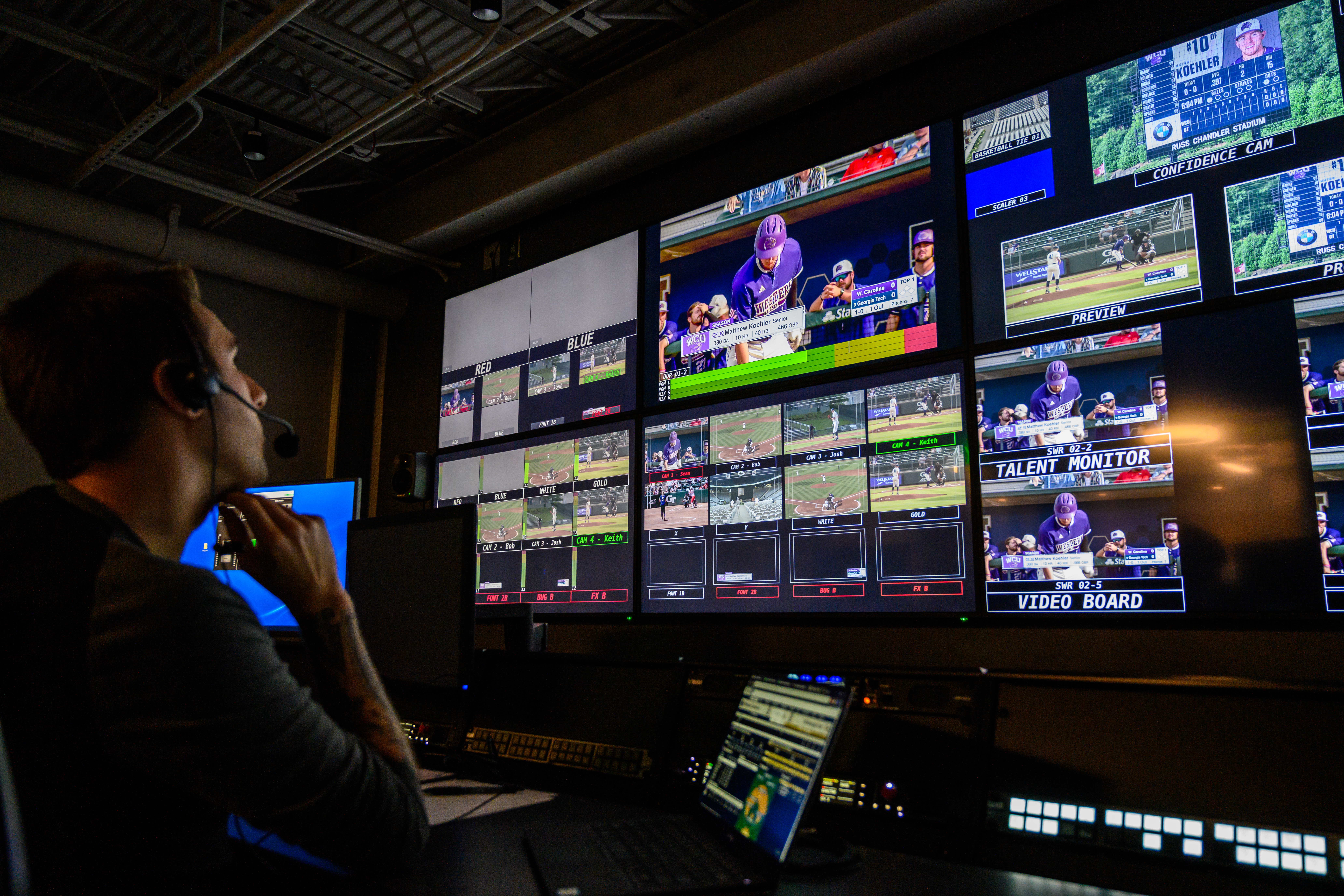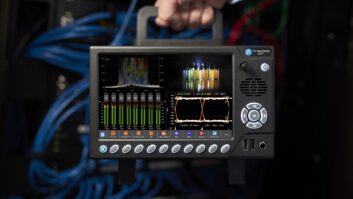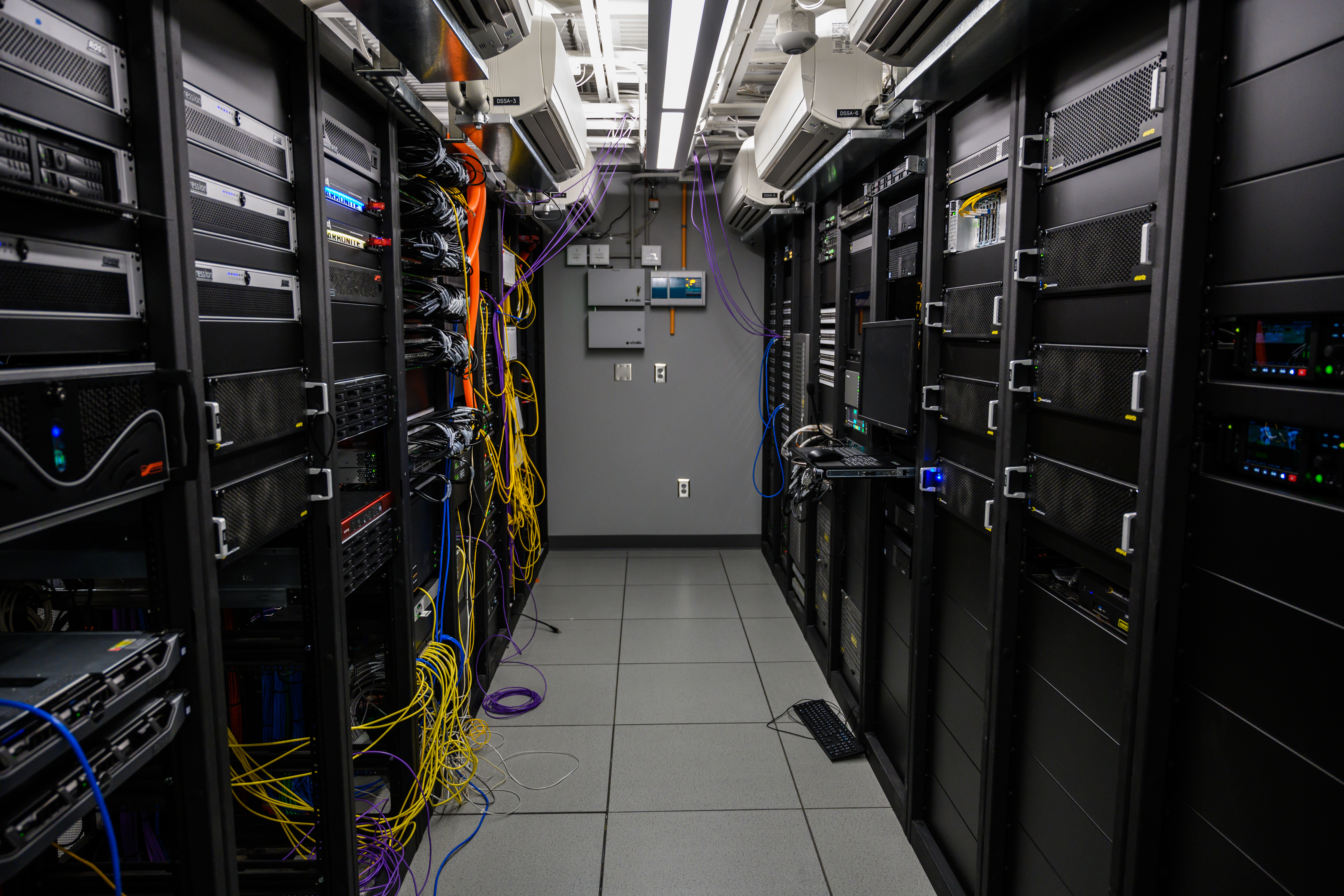 On this edition of the SVC Podcast, Contributing Editor Bennett Liles talks with Jeff Volk, Vice President at Alpha Video about their installation of a new sports television production center at the Georgia Institute of Technology. Timed to coincide with ESPN’s launch of the ACC Network, the facility has multiple control rooms and studio space. It uses hundreds of fiber lines to connect to sports venues all over the Georgia Tech campus. In Part 1 Jeff outlines the installation of audio and video switching gear along with the fiber optics.
On this edition of the SVC Podcast, Contributing Editor Bennett Liles talks with Jeff Volk, Vice President at Alpha Video about their installation of a new sports television production center at the Georgia Institute of Technology. Timed to coincide with ESPN’s launch of the ACC Network, the facility has multiple control rooms and studio space. It uses hundreds of fiber lines to connect to sports venues all over the Georgia Tech campus. In Part 1 Jeff outlines the installation of audio and video switching gear along with the fiber optics.
FOR MORE: GO TO PART 2
Links:
- Alpha Video and Audio, Inc. – national AV and broadcast integrator
- Yamaha CL5 and CL3 production audio mixing consoles
- Panasonic AK-HC5000GSJ broadcast TV camera
- Ross Video Carbonite Black video production switcher
When ESPN announced the creation of their Atlantic Coast Conference TV sports network, the race was on to get the technical facilities in place at the schools’ end of things. Georgia Tech called in Alpha Video to get the job done. Alpha Video’s Jeff Volk is here with the whole story, up next on the SVC Podcast.
Jeff, good to have you here with us on the SVC Podcast from Alpha Video in Eden Prairie, Minnesota. Tell us a little about Alpha Video.
Sure. Alpha Video is a system integrator based in the Twin Cities of Minnesota. We’ve been in business since 1970 and we serve a variety of different markets from education to healthcare to corporate AV; all the traditional sort of AV markets and video production markets you would expect. And back in 2002 I founded and started our sports and entertainment division, which is focused specifically on the collegiate and professional sports venue market. And we also have a very large casino and gaming presence; and that business is an international business for us. So we do quite a few different things to quite a lot of different folks around the country and around the world and it’s all work that we’ve very, very proud of. [Timestamp: 1:26]
You’ve had a very big presence in the Atlanta area. You’ve fitted out a lot of the local high profile venues here and we’re going to be talking about one of those at Georgia Tech. Let’s go back a little bit on this. I think it was in 2016 that ESPN decided they were going to have an ACC Atlantic Coast Conference college sports TV network and so what happened at that point?
That was announced quite before the actual launch of the network and so ever before that they had announced and launched the SEC network, which was the predecessor, obviously, to the ACC network. And so with a lot of lessons learned from the deployment of the SEC network, the ACC network had a little bit longer ramp and a little bit better planning period to be able to not only learn from the SEC network’s mistakes, but to kind of figure out their own plans for what they wanted to do. So the network launched officially just in August of this year, but many schools were prepared and have been providing content to ESPN for quite a number of years in various different ways, shapes and forms. But now, starting August, there’s not only the linear network that you can see if your cable or satellite provider offers it, but you can also see it in terms of a digital network with far more content available on the digital network than on the linear platform. [Timestamp: 2:46
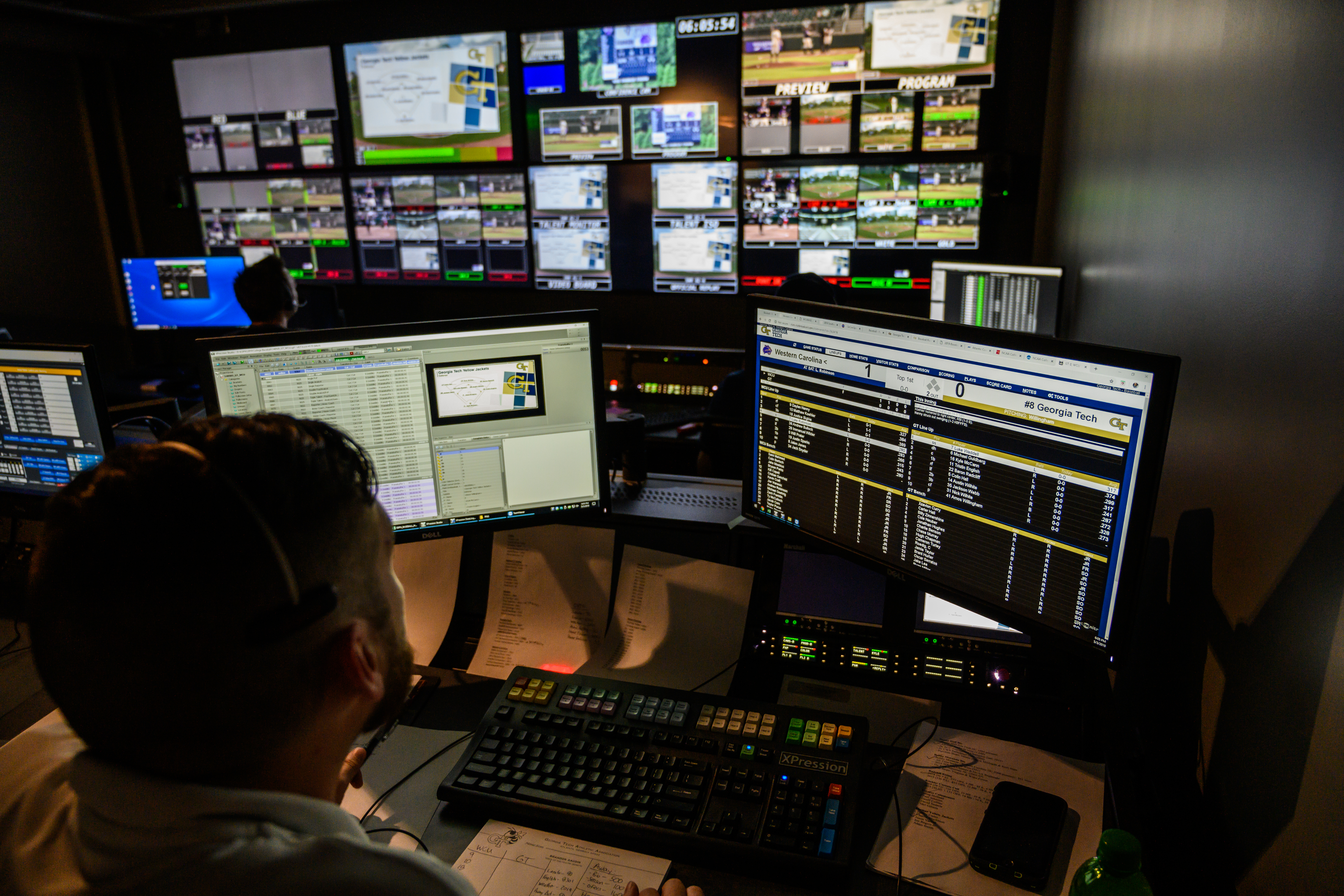
OK that was sort of the starting gun and the ACC schools really had to get on the stick and get some advanced TV sports production facilities going and that’s around when Alpha Video came in. Now what did Georgia Tech already have as far as a sports TV production facility?
Yeah, I think for many of our clients, including those in the ACC and Georgia Tech, many had control rooms existing already, right, but they were using those to produce largely in-venue video board content to display the game and replays and all of the elements you would expect to see when you go to a football game or a basketball game on the video screens. And so many of the schools have facilities that would support that already but not necessarily facilities that would support video board production and now being responsible for actually producing the events for television either online or on a linear ESPN network. Georgia Tech was very much in that same bucket, so in the early to mid-2000s as a part of a renovation of McCamish Pavilion, which is their basketball arena, they had installed a control room at that facility that was connected to their football stadium, their baseball stadium, a handful of other venues that had LED displays. And originally that started out as a control room that was only going to produce content for those video displays. As streaming became popular in general, Georgia Tech actually was a little bit ahead of the curve in terms of repurposing their control room and being able to use it for a dual function. So they did a lot with a little and used a singular control room to be able to produce not just their in-venue video board production but also produce streaming television that would go over the internet, but also in some cases actual linear television that would appear on Fox Sports South or an ESPN network. So they had been at this for quite some time but not really at a scale that they’re at today, right. And so the ACC network really afforded them an opportunity to examine what they were doing and really expand upon it greatly from a singular control room that they were kind of shoe-stringing multifaceted productions together to a state-of-the-art facility that allowed them to do not just a stream of a baseball game while also putting it on the video board, but being able to do that for multiple simultaneous sports or simultaneous events at the same time. [Timestamp: 5:23]

And was this project a buildout of that existing studio or was this a completely separate and new control room and studio?
So what Georgia Tech did is they were very fortunate in that their campus facilities people – not their athletics facilities people, but the people that are in charge of facilities on campus – had a building that was perfectly situated sort in the middle of their athletic core. So Georgia Tech’s athletic facilities are all sort of centrally located on campus with the exception of the football stadium, which is kind of on the other end of campus. And so facilities had a building that was right adjacent to their basketball arena and then sort of in the heart of their athletics core that they were leaving and vacating to move into another facility, and that became the perfect opportunity for athletics to create a new production facility out of that building. So they took an existing building and stripped it down to everything except the steel girders, the floor and the roof deck – it’s a two-story building – along with the stairs and the elevators, and then created an entirely new building around it including an exterior skin and redid and reworked the entire interior of the building. So they absolutely went with a new facility and then simultaneous to that, or as a part of the overall project, we did also renovate their existing control room in the basketball arena. And that’s really their fourth control room and that allows them some additional flexibility. It’s not only connected to the main production facility, but it’s also right there in the basketball arena where they do a lot of not just athletic events, but things like graduations and outside speakers and other people that come in to the university. So it gives them a perfect platform to produce those events locally within the arena by repurposing that space as well. [Timestamp: 7:19]
So a lot of things started happening with that. You had something like a ten million dollar budget but we both know that live video production is very expensive so there must have been some careful budget decisions to have to make in that process.
There were. So that ten million dollars, to be clear, was encompassing of everything related to the project and that really fell into three primary buckets. So there’s the physical construction. Even though they started with a building that had steel and floors and they didn’t have to redo all of the foundations and groundwork and do all of that stuff. As you can imagine, taking a two-story building that’s rather large and gutting it and rebuilding it, essentially with the exception of the steel and the stairs and the elevators, is a fairly expensive endeavor. So that was a part of that bucket of their money. They also had a lot of infrastructure that needed to happen on campus – not only via fiber to each one of the venues, but all of the signal cabling that needed to happen within all of those athletics venues to get camera positions back to a central point that it could then connect from there back to the production facility, press boxes, and things like announcer stations and all of the things that you need to be able to do or produce television. So infrastructure was another very large part of the project overall. And then the last bucket was obviously the buildout from an electronics perspective of the production facility itself. It was the largest bucket of the budget but as you can imagine, with any project of that size and scope what we started with with Georgia Tech was really sort of a wish list of all of the things that they would like to have. That wish list came in substantially over the bucket of money that we had for that portion of the project. So then we really went through an extensive value engineering process with the folks from Georgia Tech to understand what their technical must-haves were and then adding those into the budget. And then prioritizing the list of the things that they would like to have – not necessarily luxury items, but somewhere in between a must-have and a luxury item – and working those into the final budget as well. So taking all three of those pieces, the construction budget, the infrastructure budget and the technical budget, and managing all three of those sort of constantly moving parts together was one of the challenges. Not just for us, but for the folks at Georgia Tech as well. [Timestamp: 9:45]
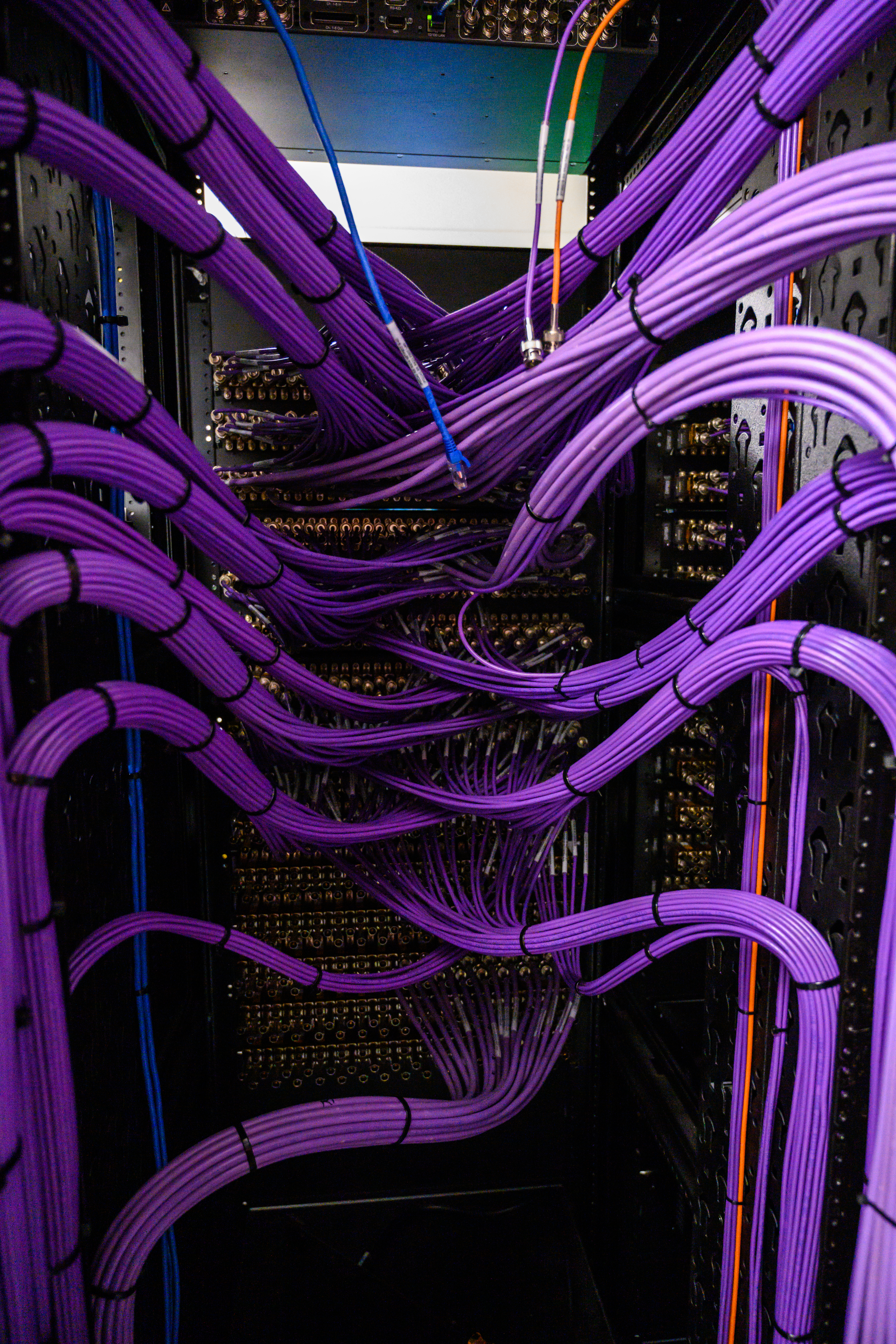
When this huge opportunity came up I think you talked to some of Georgia Tech’s traditional rivals in the ACC. Some of them might have already had a head start getting their production centers underway so maybe you had the advantage of learning from their experience. Maybe what to do and maybe what not to do?
Yeah, so Georgia Tech certainly was one of the last schools – I think they were one of the last four or five schools of all of the schools in the ACC to complete their facility. So we certainly had some opportunity not just for Georgia Tech to go and survey their counterparts. What we find oftentimes on that side of the business is that while there may be intense rivalries on the field the video guys and the production guys and the media guys are all sort of working to accomplish the same goals, right, and it’s to entertain their fans whether it’s in the venue or in their living room or on their mobile device or whatever the case may be. And so there’s a tremendous amount of comradery on that side of it. So there’s a lot of sharing of sort of lessons learned and tips and tricks amongst the individual schools themselves because they have a very strong working relationship like that. But then we also had a benefit of having worked with a couple of other ACC schools on either the design or the design and build of their facilities. Schools like Florida State, who were also sort of very early in the ESPN live production side of things. But we also brought a wealth of other experience to it from the schools that we had worked with when the SEC network was being developed. And then we’ve also worked with several other conferences like the Missouri Valley Conference and the Sunbelt Conference where the conference actually hired us to work with all of the schools in the conference to develop their ESPN streaming packages on a per-campus basis. So we also brought a tremendous amount of experience and knowledge of what sort of works best, what might not work best, tips and tricks from the SEC network, tips and tricks from those smaller conferences, and tips and tricks from the other schools that we’d worked with. Coupling that with Georgia Tech, who had a very clear vision for what they wanted and is a great customer to work with because they absolutely understood the technology. And they understood that end of it, not just the creative end of it which always helps. So taking all of those little bits of information and data points and bringing them together and the benefit of being one of the last ones to go online really created a facility that we think is second to none not just in the ACC but of all of these types of facilities around the country. [Timestamp: 12:24]
And on specific production hardware one of the things you chose was the Yamaha CL5 and CL3 digital mixing consoles. Was the attraction on those the price, the features or were they just easy to train people on?
So I think it’s a mix of three, right? And so as it relates to what ESPN wants or what ESPN mandates from an equipment perspective for these types of facilities, the specifications are generally pretty loose, right? It dictates a system format. It dictates a certain number of cameras, certain types of lenses. On the audio side it mandates certain mixer capabilities, not necessarily specific brands of mixers. As a company we’ve had a tremendous amount of success with Yamaha. They do have great price points. They are fairly easy to use, but they’re also very flexible so we can put them into multiple environments. We can link units together via fiber. The Georgia Tech installation relies heavily on Date audio as well so we can interface the Yamaha units very easily in the Dante domain. And with all of the various control rooms and areas that we have working and the fact that they sometimes have to work together, all of the feature sets and price points and ease-of-use of the Yamaha mixers have made them a very popular choice not just for Georgia Tech but for many of our collegiate and pro-sports customers. [Timestamp: 13:49]
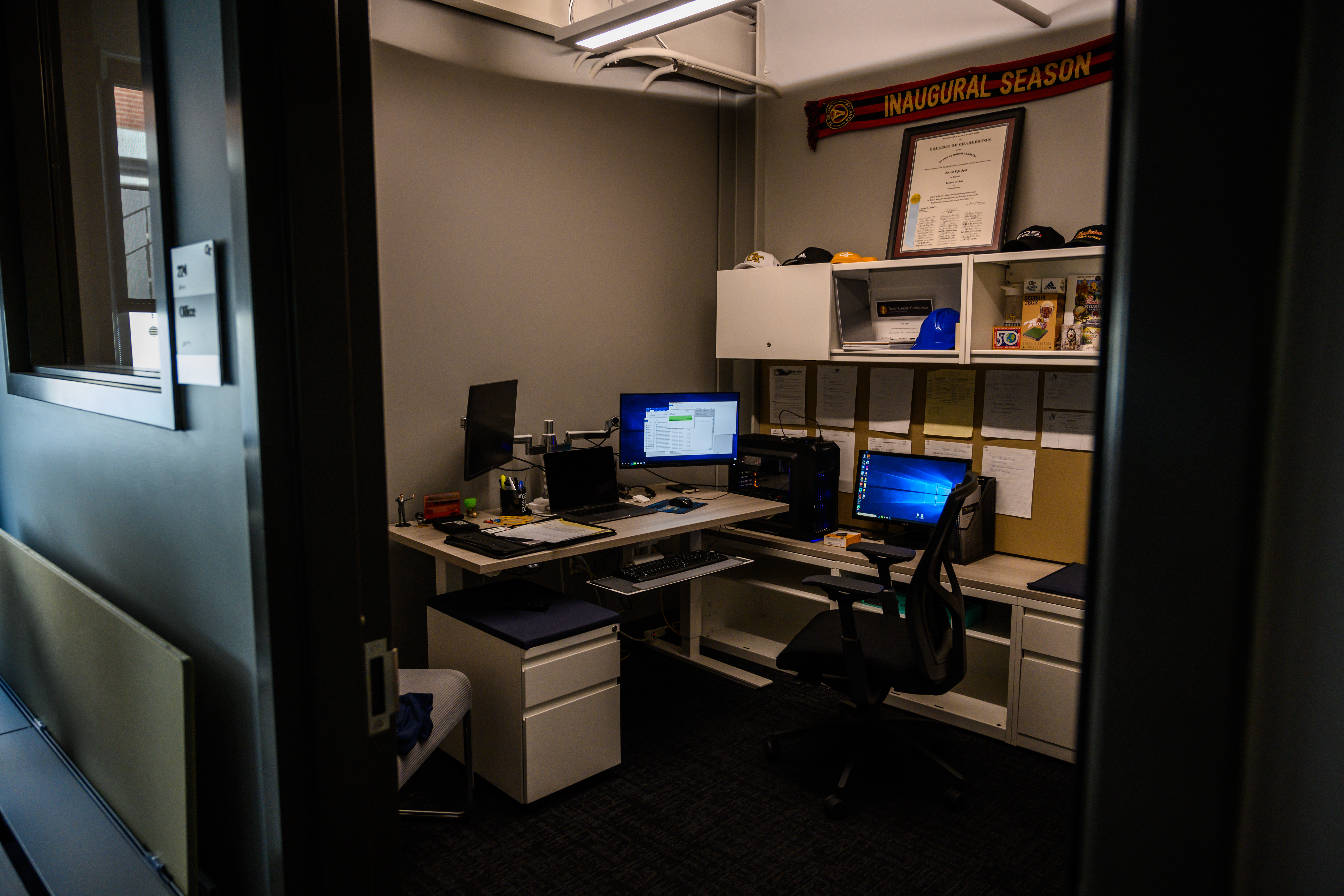
And on the camera side of things I believe it was 13 Panasonic AK-HC5000GSJ cameras and then six Marshall cameras. Are those the ones operated remotely?
The Panasonic AK-HC5000 cameras are actually studio-type cameras. They can also be handheld and shoulder-mounted. So these are their primary television production cameras. So they’ll deploy those in groups to various different venues depending on what events they have to cover that day. They’re operated by a person in the venue but they’re controlled remotely from a shading perspective and a signal-quality perspective from the production facility remotely. So they’re absolutely connected to the venue wherever it may be, backed via fiber to the control rooms and then they’re controlled form a central engineering point that we have within the facility. The Marshall cameras are simply confidence cameras and POV cameras. And those particular models are fixed POV cameras so one of the challenges you have when you have a baseball stadium that may be eight blocks away from your production facility is you don’t have eyes on what’s going on on the video board or if you have even a signal happening. You have staff that’s in the venue, but if you’re looking at your monitor while doing your production pretty much every producer or director we’ve worked with wants that confidence camera that allows them to know their signal is there and it’s getting to the board, right? And so those Marshall confidence cameras act in that regard for us and again all of that video comes back remotely from the venues to that central point. We do also have a handful of Panasonic remotely-controlled PTZ cameras, some outdoor models at some venues, and some indoor models at other venues. Initially there was going to be quite a few more but that was one of those things that we value-engineered that fell sort of in between that must-have and would like to have category. And so for many of the venues those PTZ cameras ultimately were removed today, but we included all of the infrastructure to those locations so that we can easily add those cameras that some point down the road; budget or need permitting. [Timestamp: 16:04]
And they obviously had some existing fiber optic infrastructure. Did you have to add any to that?
Yeah. So as I mentioned earlier, infrastructure was a big piece of this project. So Georgia Tech was in a pretty good position in that they had some fiber between venues. They had some fiber and some connectivity within each venue. But to take on a project of this magnitude really required an infrastructure upgrade within each venue and then an infrastructure upgrade between each venue and the centralized projection facility. So we did not handle that particular scope of work. We assisted with some of the design development and some of the final value engineering of what that looked like, but they had a local electrical contractor who was doing other pieces of work and specializes in pulling that cable and doing that work. And then we came in and assisted with testing and verifying it at the end and made sure it would all work back to the production facility. But absolutely that was a big piece of their budget and frankly a piece that came in at quite a bit more than what we originally expected. And so that’s what led to some of the equipment value engineering in other areas because the infrastructure investment was pretty substantial. [Timestamp: 17:19]
Well, with all the fiber planning as if your team didn’t have enough to do already. It’s great to hear how you got started on all this and in Part 2 we’ll get more into it. We’ve been talking to Jeff Volk, Director of Sports and Entertainment with Alpha Video and their brand new ACC TV sports network control room at Georgia Tech. A great place for fans to see and students to learn the TV tech jobs. Really appreciate your getting with us on it.
No problem.
Georgia Tech’s new ACC Network TV broadcast headquarters takes the school to the head of the line at game time and it’s a great recruiting tool. Next week Jeff will take us backstage there for a look at tech communication and crew training. Get right back here with us for that on the next SVC Podcast.



